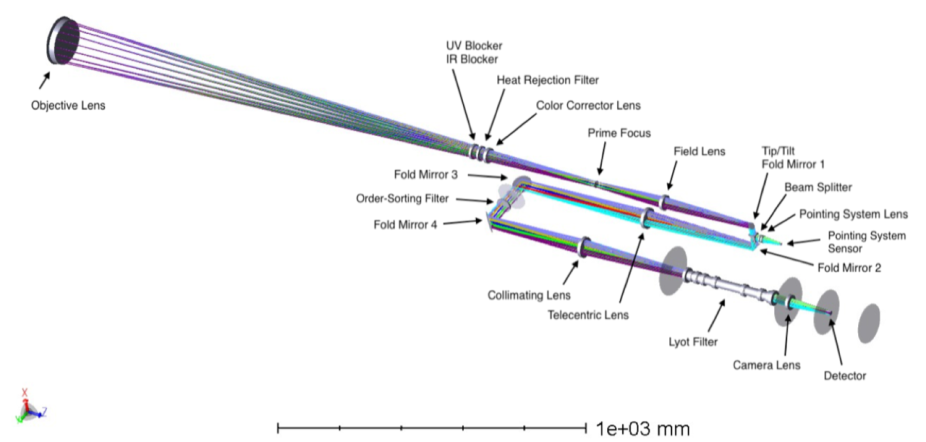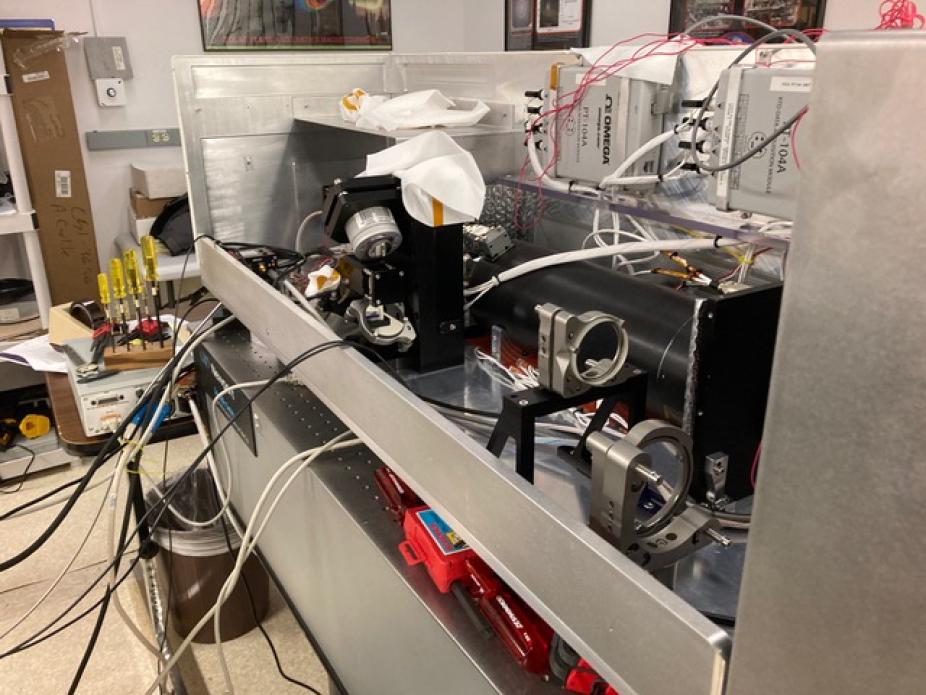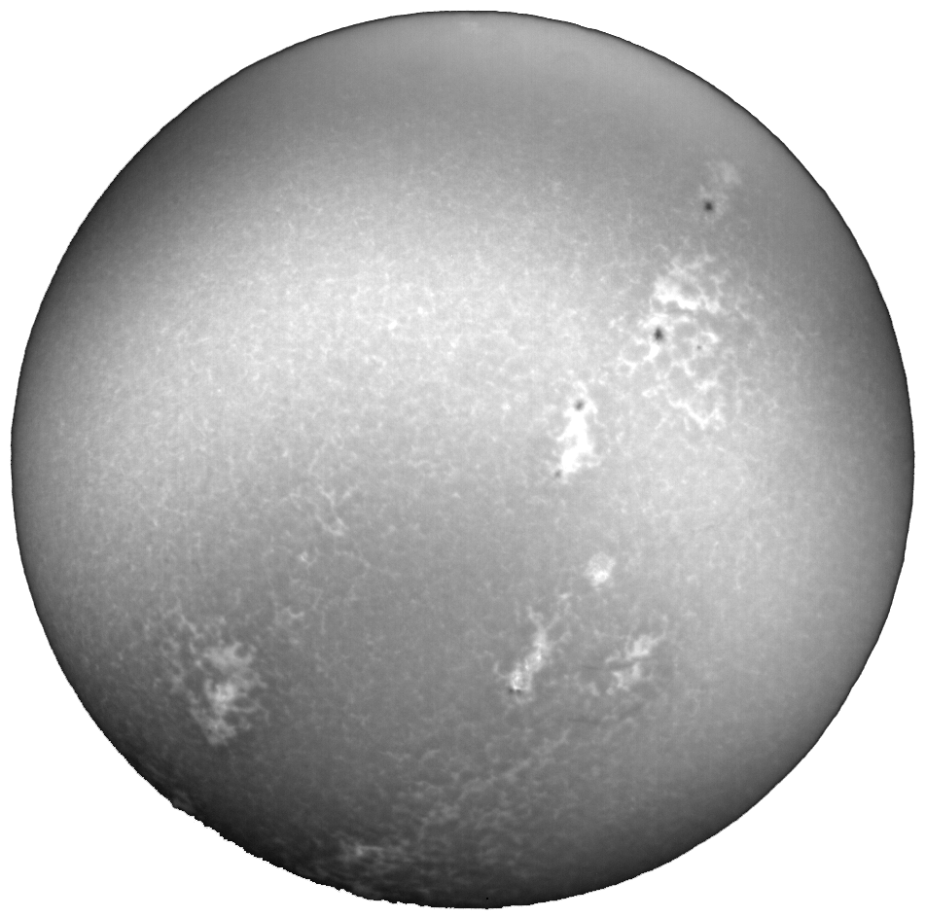Chromosphere and Prominence Magnetometer (ChroMag)
The Chromospheric and Prominence Magnetometer (ChroMag) will measure and monitor the magnetic and thermodynamic conditions of the chromosphere at the base of the heliospheric system. ChroMag measurements will permit the study of the dynamic evolution of the heliosphere’s thermo-magnetic interface on an ongoing basis as well as during the onset of the large-scale eruptions that episodically impact the near-Earth environment.
ChroMag will observe polarized spectra of lines that form in the sun’s outer atmosphere in a synoptic fashion. The spectral lines sample the solar photosphere and chromosphere. Properties of the plasma that emitted the light an be inferred from these measurements through the application of “inversion codes."
A prototype instrument was constructed and tested extensively at the NCAR Mesa Spar Facility in Boulder. The prototype had been planned to demonstrate and verify the instrument concept and technologies. The prototype used a short, linear optical system with a minimal number of optical components. Results from the prototype shaped the optical design of ChroMag in key ways.

ChroMag optical design.
The instrument consists of a telescope with an aperture of 135 mm that feeds a narrow-band Lyot filter imaging polarimeter. The optical system (shown above) includes an image stabilization system that eliminates polarimetric errors resulting from atmospheric seeing. Instead of a short, linear optical path like the prototype, the instrument has a folded optical path with an intermediate telecentric focus near the order-sorting filter to eliminate stray light caused by leakage in unwanted order of the Lyot filter. The beam through the Lyot filter is collimated to achieve the narrowest possible spectral transmission profile. The prototype showed that the required level of thermal stabilization of the Lyot filter is difficult to achieve in the rapidly changing outdoor thermal environment of the observatory. The instrument has several layers of thermal control to stabilize the temperature of the Lyot filter, and the filter itself was modified with with temperature sensors on the optical components in order to be able to compensate the tuning of the filter to account for its temperature.

ChroMag in the HAO lab.
The instrument is in final stages of construction and is being integrated in the lab prior to characterization of the Lyot filter. The instrument will be deployed to the NCAR Mesa Spar Facility in Boulder in the spring for testing before being deployed to NCAR’s Mauna Loa Solar Observatory (expected in summer 2025).

Shown here is the first light 854.2nm Ca II line image of the chromosphere taken with the prototype instrument.